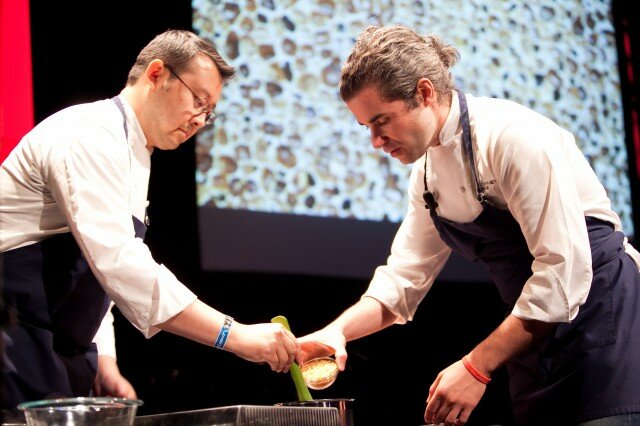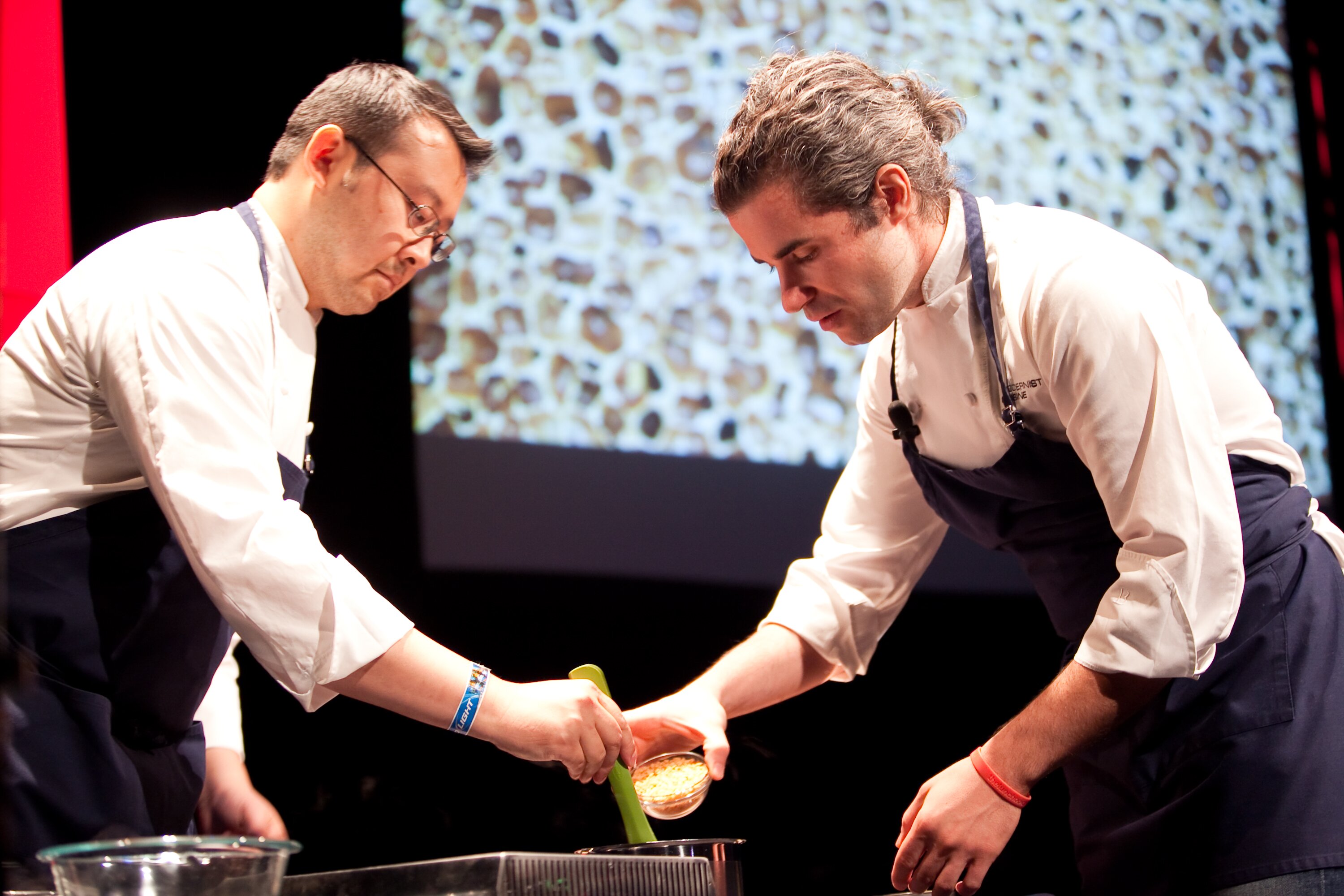
The most memorable thing I experienced at Bumbershoot this year was a demonstration at the intersection of art, science, and food known as “Modernist Cuisine.”
With looks a blend of Colin Firth and Fabio, and a hide-and-seek French accent, Maxime Bilet had the audience eating out of the palm of his hand–almost literally. He passed out goody bags at the beginning of the presentation, asking us please to wait to ingest the contents until he directed us to do so. Patience has never been so solidly rewarded.
Bilet talked about The Cooking Lab, where Modernist Cuisine (a 6-volume set filled with molecular gastronomy history, techniques and recipes) was born, and showed exquisite photos and videos of some of the cooking techniques and results of their experiments over the past four and a half years. The brain-child of Nathan Myhrvold, former CTO of Microsoft, The Cooking Lab is located in Seattle, and is no ordinary home-or commercial-kitchen. Alongside standard kitchen items, The Cooking Lab is equipped with ultra high-pressure homogenizers (for making emulsions “out of anything,” Bilet said), freeze-dryers, a 50 G centrifuge, ultrasonic baths, a 100-ton hydraulic press, and, of course, multiple sous vide setups.
After piquing our curiosity with pictures, video, and a charming talk, Bilet finally directed us to open our goody bags. He had included “essence of pea,” which was created by whirling pea puree in a centrifuge for a ridiculous amount of time, until it separated into three layers–all the starch and sugars, a pea “butter” that Bilet told us was unctuous on toast (and which I wish I could have tasted), and essence of pea, which was a vial of the clearest, cleanest pea flavor I’ve ever tasted.
After we’d savored peas, Bilet’s team poured orange juice on dry ice and turned on fans – it was cold, but it smelled like oranges. Then he directed us to open another small container and pop all the contents in our mouths at once. Suddenly, we weren’t just smelling oranges, we were tasting them. Using a technique known as spherification, Bilet had captured a reduction of orange juice in a gelatin-like sphere, which dissolved instantly on the tongue.
Finally, Bilet showed us how to combine a favorite childhood candy–Pop Rocks–with dark chocolate and puffed brown rice to make a sophisticated but nostalgic treat. You can buy neutral-flavored Pop Rocks, or pastry rocks, online–a revelation! This sweet treat was a great way to end the demonstration, but my favorite taste was the essence of pea.
Luckily, for those of us who don’t want to or can’t spend $600 on a cookbook, The Cooking Lab is coming out with Modernist Cuisine at Home, a much more reasonable 2-volume, $140 book. (I might call that $460 difference in price a “savings” and put it toward a home centrifuge or a high-powered emulsifier!)
Bilet drove home to us that with some standard kitchen appliances and some simple techniques, we could all become the best chefs in the city at any given moment. Granted, I haven’t yet turned my crock pot into a sous vide appliance, but armed with Bilet’s cheerful encouragement, I now know I could.
